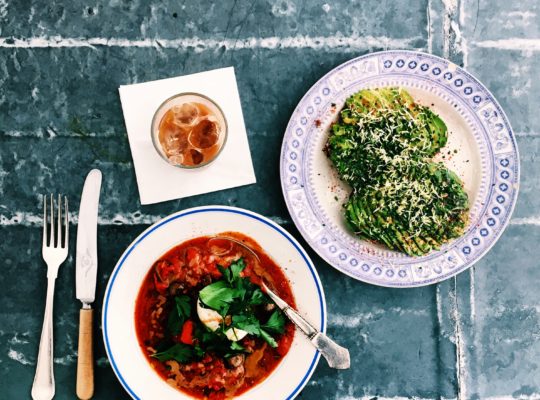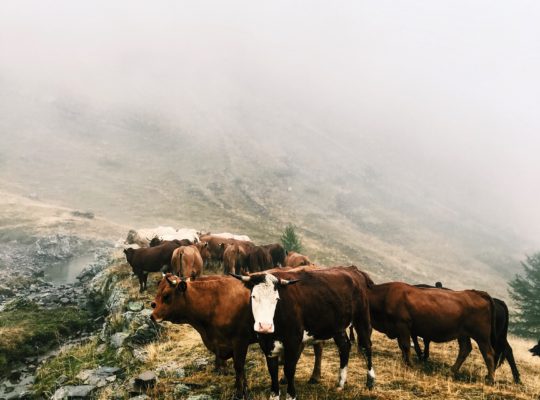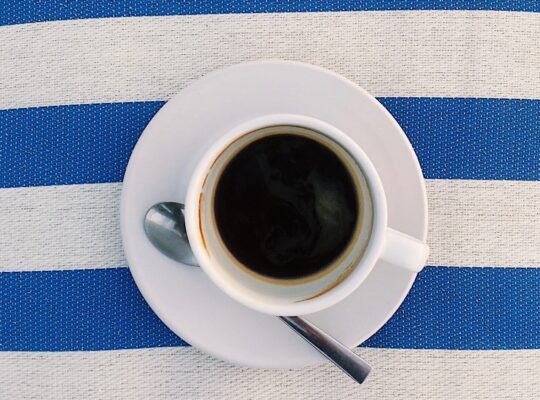
Food is Culture
By Elisabeth Fondell
Food is not rational. Food is culture, habit, craving, and identity. [Jonathan Safran Foer]
Before 2016, I knew little about fermentation. I liked sauerkraut on sausages and enjoyed the crispness of pickles, but the idea of fermenting was outside my grasp. The whole concept seemed a bit magical and overly scientific.
I began embracing fermentation after moving back to my rural hometown. I first attempted preserved lemons to supplement our Moroccan tagines. Preserving lemons is a rather simple endeavor: combine salt, spices, and lemons and let sit for three weeks. The result is a jar of salty, soft lemon rinds used to add zest to any dish. Preserved lemons were my warm-up, a way of dipping my toes in the water before plunging in headfirst.
Next came kimchi. On the day I first considered making it, the local grocer happened to have fresh Napa cabbage. It was a sign. I grabbed the green and white oblong vegetable and got to work. Following a recipe out of Travis Lett’s cookbook, Gjelina, I set off into new culinary territory. Calling for guajillo chiles instead of the traditional Korean chiles, the recipe seemed doable and unintimidating. I arranged the ingredients, proceeded cautiously, and created a rookie batch of kimchi with little trouble. Then came the tricky part, the part that made me slightly uneasy –the fermentation.
Cover and let stand at room temperature for two to four weeks. You will see small bubbles form in the mixture. [Gjelina]
Bubbles! Never before had I encountered a recipe that required and encouraged bubbles. When you’re a bit unsure about a recent mixture of cabbage, salt, fish sauce, garlic, onion, chiles, and ginger, the last thing you want to do is let it sit out at room temperature for two to four weeks while watching for bubbles. But, I followed and waited. With extreme patience and mild negligence, I waited. And waited. At week three with no sign of bubbles, I waited a few days more. Eventually, at the very end of week four, I spotted bubbles and tested the kimchi. To the surprise of myself and the good people willing to test my concoction, it tasted delicious.
My zealous advocacy for homemade kimchi began. Since then, I’ve made many batches. Some made for my home kitchen, others to give as gifts, even one big batch as part of a community dinner for a neighboring town. And each time I make it, I learn something new. I see the process a bit differently. There’s room to tweak the measurements and test the fermentation time. I like to think of recipes as guidelines, keeping the end goal clear but allowing space for embellishment and experimentation along the way.
After making kimchi, the world of fermentation beckoned me further. April brought the next opportunity with fresh asparagus growing wild around the farm. Each day I trekked through ditches pulling asparagus, eager to ferment this fresh harbinger of spring. My maiden voyage into asparagus pickles was mediocre, but I recovered quickly with the asparagus growing seven inches a day at its peak. I picked many armfuls more that summer.
For my thirtieth birthday, I received a few books to spur my food exploration further. One book in particular, The Art of Fermentation by Sandor Katz, had the following quote:
To ferment your own food is to lodge an eloquent protest – of the senses – against the homogenization of flavors and food experiences now rolling like a great, undifferentiated lawn across the globe. [Michael Pollan]
I’ve taken this as a call to action, encouraging me onward in my practice. I even designed and created specialized ceramic fermentation crocks complete with a water-sealing moat and weights for holding the vegetables safely under the brine.
I am thankful for the bounty of vegetables at the farmers market. Preserving fresh vegetables at their peak season holds the flavor and color even as late autumn sets in. It creates a way to feel connected to the land, the seasons, and the natural world around us. So much of the food in standard grocers is mass produced outside our region, requiring significant transportation costs. Sugars and preservatives sneak into these commercial foods to extend shelf life. In contrast, fermenting reminds me of my tangible connection to food and the role I play as an active participant.
As tomato confit simmers away in the oven, preserving the summer’s excess tomatoes, the warm aromas of garlic and thyme float through the kitchen. I find my peace in the kitchen. The late afternoon sun shines in the window, the occasional wasp breezes by outside, and my foot taps to Gillian Welch singing in the background.
Fermentation transformed the way I eat and live by introducing a challenge, a creative outlet, and a way of adding flavor complexity to the food I cook. I will continue fermenting, or as Michael Pollan says, “lodging my eloquent protest” against the homogenization of food and flavor. As I do so, I will remember my connection to what I eat. Little by little I’ll make an impact. I’ll take on opportunities for participatory action. I’ll work to eliminate food waste by imaginative food preservation. And I will seize the chance to participate in local culture.
Grab some vegetables and join me. Your taste buds, pantry shelves, and dinner companions will be immensely grateful.
NEXT











